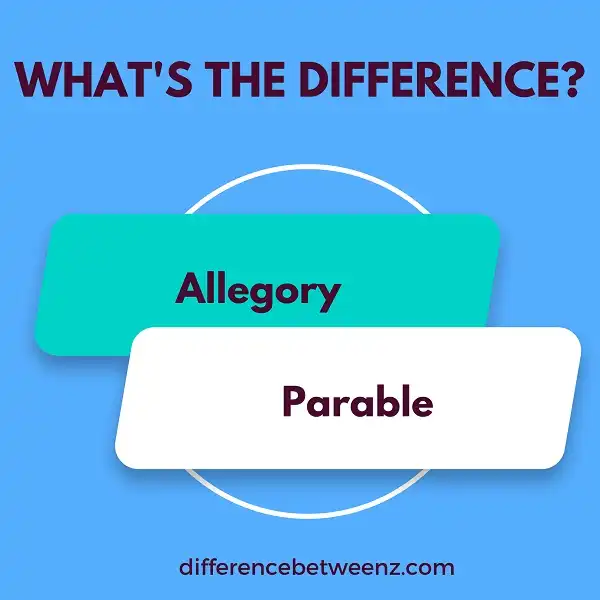Do you ever feel like trying to tell the difference between an allegory and a parable is almost as hard as deciphering a riddle? If so, don’t worry-you are not alone! While on the surface both classic storytelling devices may appear to have similar elements, there are actually some key characteristics that distinguish them from one another. In this blog post, we will explore these differences in depth so that by the end of it you feel more comfortable understanding and working with both allegories and parables.
What is Allegory?
- Allegory is a literary device used to express an abstract idea or moral through the use of characters, events, and metaphors. Allegory is often thought of as being a long story told in a play, novel or poem.
- Allegorical stories are used to teach life lessons or explain complex concepts. Often times allegorizing a concept can help make it easier to comprehend; by using characters and objects in a narrative structure, the creator is able to break down the idea into tangible components that resonate with audiences.
- Allegory is also a powerful tool of expression which can be utilized to comment on historical, political or social issues. While many writers have utilized allegory throughout history, some widely acclaimed examples include John Bunyan’s “The Pilgrim’s Progress”, George Orwell’s “Animal Farm” and C.S Lewis’ “The Chronicles of Narnia”.
What is Parable?
A parable is an ancient form of storytelling which often makes use of metaphor and symbolism in order to convey a moral lesson. Parables were first used in Biblical literature, but they have also been a part of many other cultures throughout the ages. Parables are usually short stories that contain characters, action, settings, and dialogues between them, all crafted to illustrate a point about life for those who hear the story. Parables often help challenge people’s perspectives on the world by offering new and interesting ways to look at things. In our modern world, parables can still provide entertainment as well as valuable lessons about our existence.
Difference between Allegory and Parable
Allegory and parable are two storytelling methods that differ in their use of allegorical or literal interpretations to express a point. Allegory uses concrete objects, people, or events to represent abstract ideas and concepts. For example, George Orwell’s Animal Farm is an Allegory for the Soviet Union under Stalin. Parable, on the other hand, often takes the form of a short narrative that expresses a moral lesson through its characters and events. A well-known example is Jesus’s Parable of The Good Samaritan from the Bible. Allegory and parable both provide powerful messages, but by employing different techniques to convey them.
Conclusion
An allegory is a story in which the characters, events, and settings represent abstract concepts or ideas. A parable is a brief, simple tale that illustrates a moral or religious lesson. The main difference between an allegory and a parable is their length; an allegory is usually much longer than a parable. Both are used to teach lessons about life, human nature, and morality, but an allegory typically uses more complex symbolism and metaphors than a parable.
When deciding which one to use in your writing, consider how long you want your story to be and how complicated you want the symbolism to be. If you want to communicate a simple moral lesson without getting too deep into Symbolism 101, go with a parable. But if you have more time (and patience) for your readers, an allegory might be the better choice.


